Shungiku is a leafy green Japanese vegetable that is used in a variety of different dishes to add a depth of flavour. It has a fragrant and bittersweet taste that makes it a unique vegetable and a perfect ingredient for hot pot dishes, salads, and as a garnish. It’s packed with health benefits and is an easy vegetable to grow at home yourself.
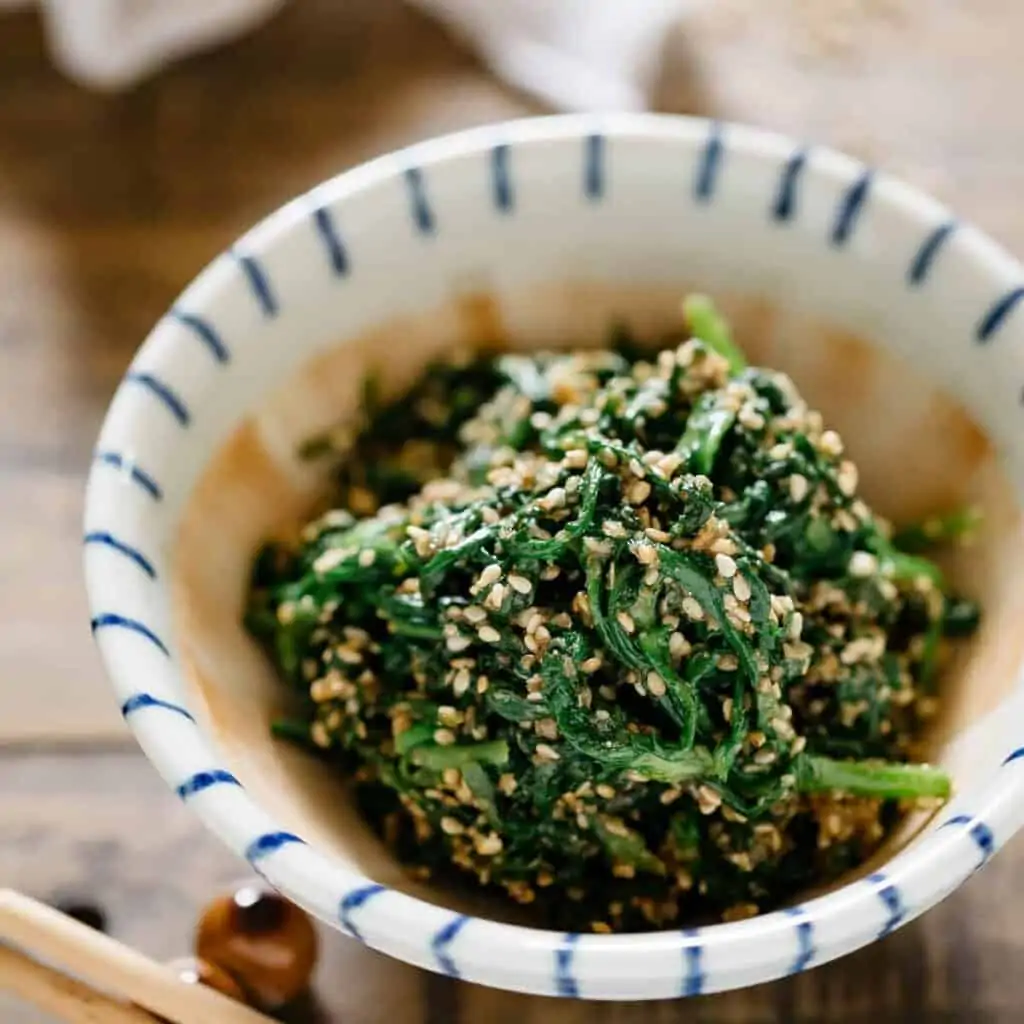
What is Shungiku?
Shungiku is a vegetable high in beta carotene and belongs to the Asteraceae family. Shungiku is a winter leafy vegetable and is in season from November to March in Japan. In Mediterranean countries where Shungiku originated, it is only cultivated as an ornamental plant, however, in East Asian countries including Japan, they are loved as edible chrysanthemum for their distinctive aroma and bitter flavour. There are different types depending on where they are produced. In the Kansai area, it is also known as “Kikuna” or “Shingiku”
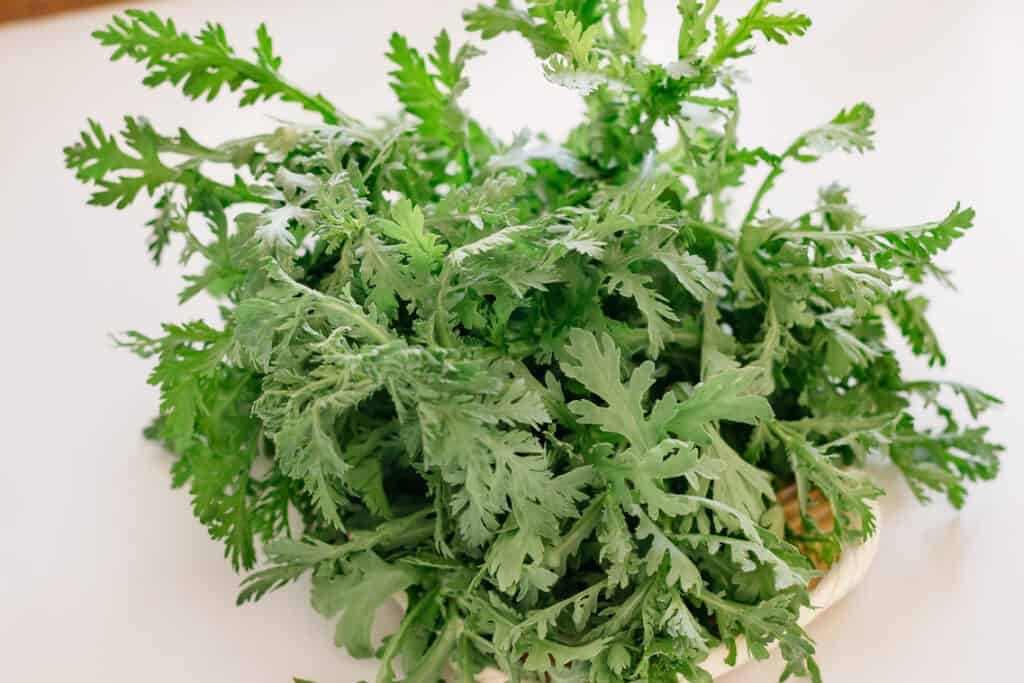
What is Shungiku Used for?
Shungiku is an indispensable winter vegetable for hot pot dishes which are called “Nabemono” such as Sukiyaki and Mizudaki. They are also used for Tempura, Gomaae, salad, soup and stir-fry. It is also a perfect ingredient for garnishing meat dishes because of its fragrant and bitter sweet taste
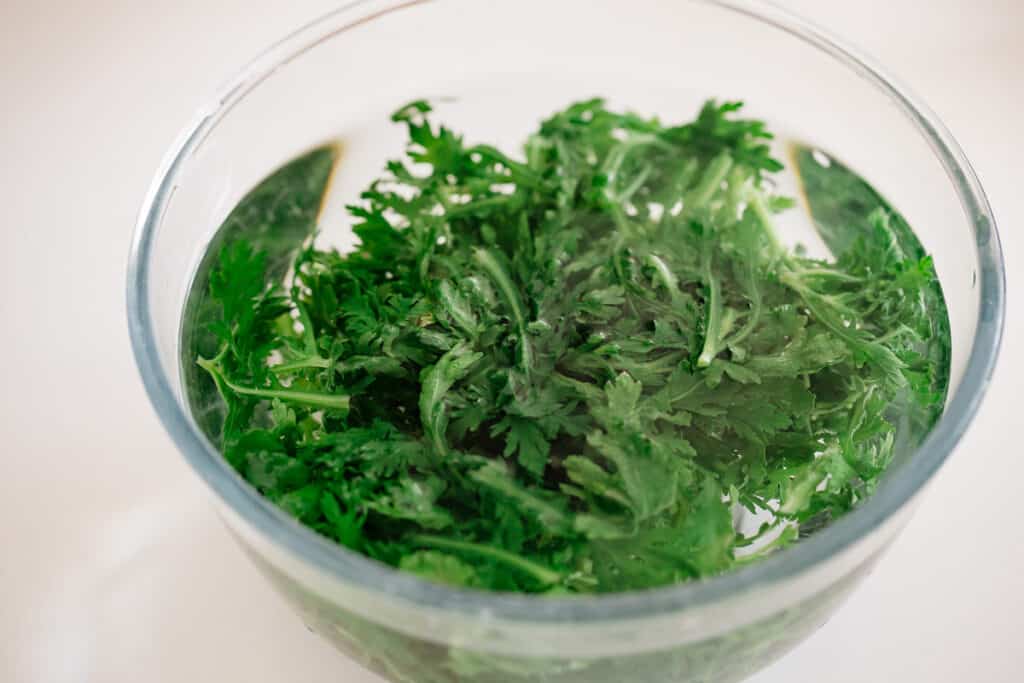
Health Benefits
Shungiku is a vegetable with outstanding nutritional value is this is not an overrated statement. They are rich in β-carotene and vitamin C and are said to have the effect of helping maintain the health of the skin and mucous membranes. Also, they are rich in minerals such as calcium and iron. Furthermore, it is said that the unique scent of garland chrysanthemum also has the function of adjusting the autonomic nerves. In addition, it contains folic acid, which women in the early stages of pregnancy should actively take.
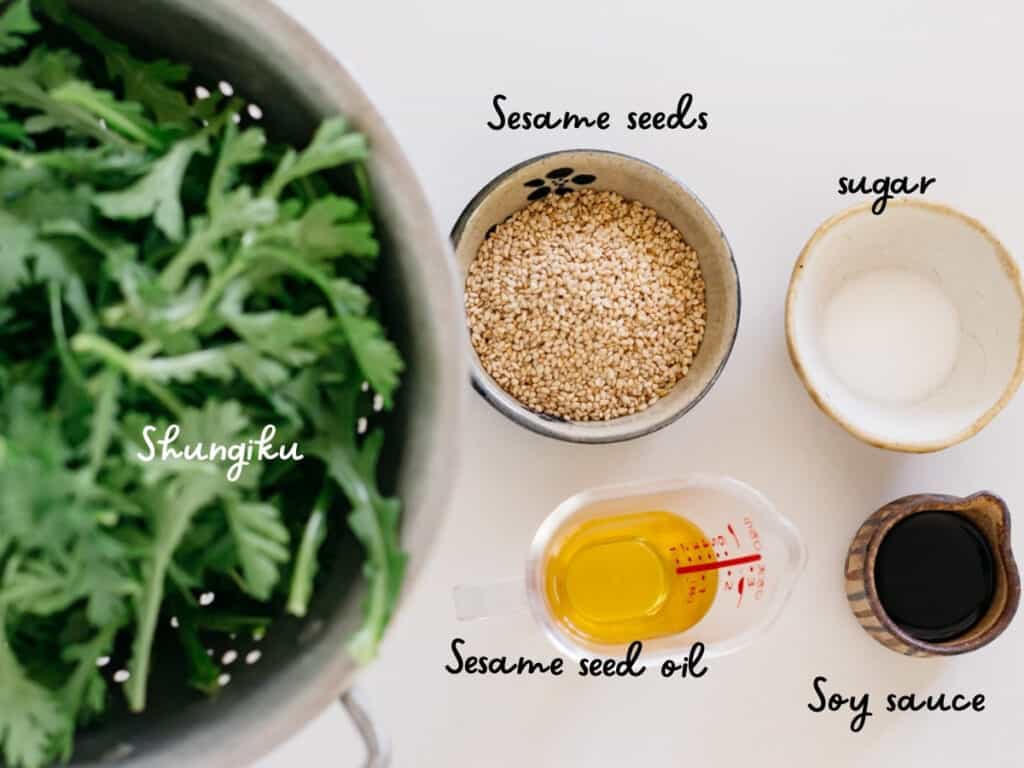
How to Pick Good Shungiku?
There are many different varieties in Japan. It is often classified by its leaf size, shape and where they are produced. But for the majority like myself too, not living in Japan, we do not have much choice. We will be very lucky if we can find it fresh from local Japanese or Asian grocery. So how do you select good quality Shungiku herb? Choose the leaves that have a firm and dark green colour and also have a scent. Also, look for the stems that are not too thick and dry, and densely grown.

How to Grow Shungiku?
Ok so like me, if Shungiku is not readily available from shops, you can grow them easily from seeds. If I can do it, anyone can. Shungiku is a vegetable that is sown and grown from seeds. You can sow seeds at any time of the year because they thrive in both heat and cold. Generally speaking though, sowing the seeds in Spring or Autumn makes the plant easier to grow. The Shungiku I grew and used for the photos in this post were sown in spring in Brisbane. More detailed information on how to grow it read How to grow edible chrysanthemum. You can purchase Chrysanthemum seeds from amazon.
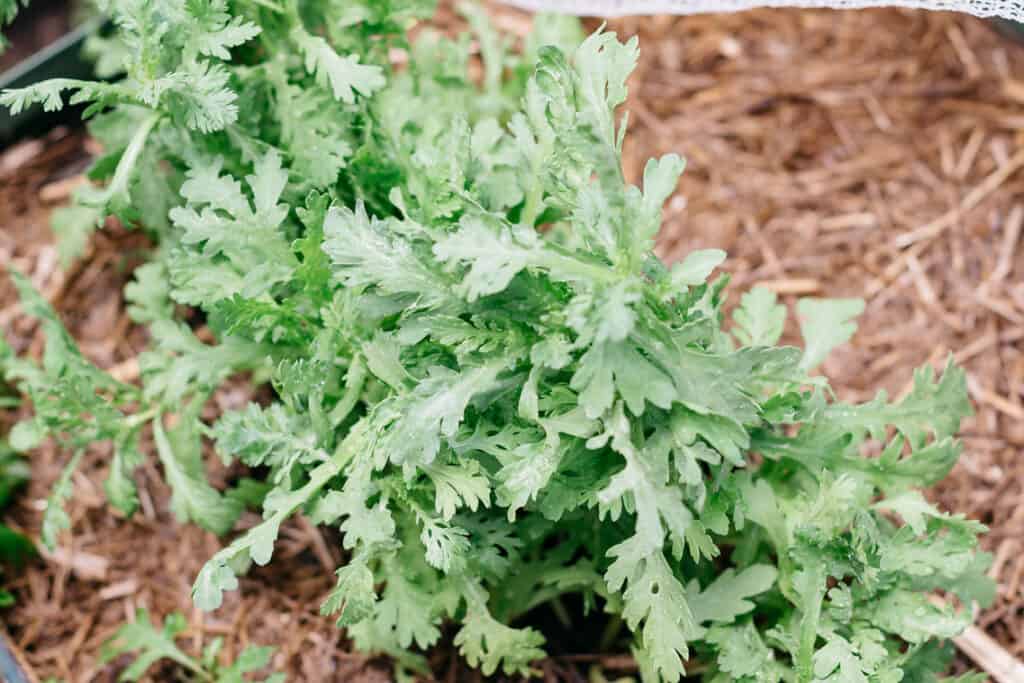
How to cook Shungiku?
Cooking Method 1: Raw – Soft leaves and stems can be used for eating raw as a salad.
Cooking Method 2: Blanched – Leaves and stems can be cut into 4-5 cm lengths, blanched for less than a minute and combined with various dressings such as Gomaae.

Method 3: Fry – It is good with stir-fry. Stir-fry with sesame oil and oyster sauce. Also good with nam pla dish. In either case, stir-fry the stems first and add the leaves then into the frying pan. In addition, you can also add to Okonomiyaki and rolled egg.
Method 4: In the pot – Shungiku is cooked easily so when you use this for pot, it’s a good idea to cut one into two equal parts and blanch it in the pot then eat straight from the pot to your bowl.
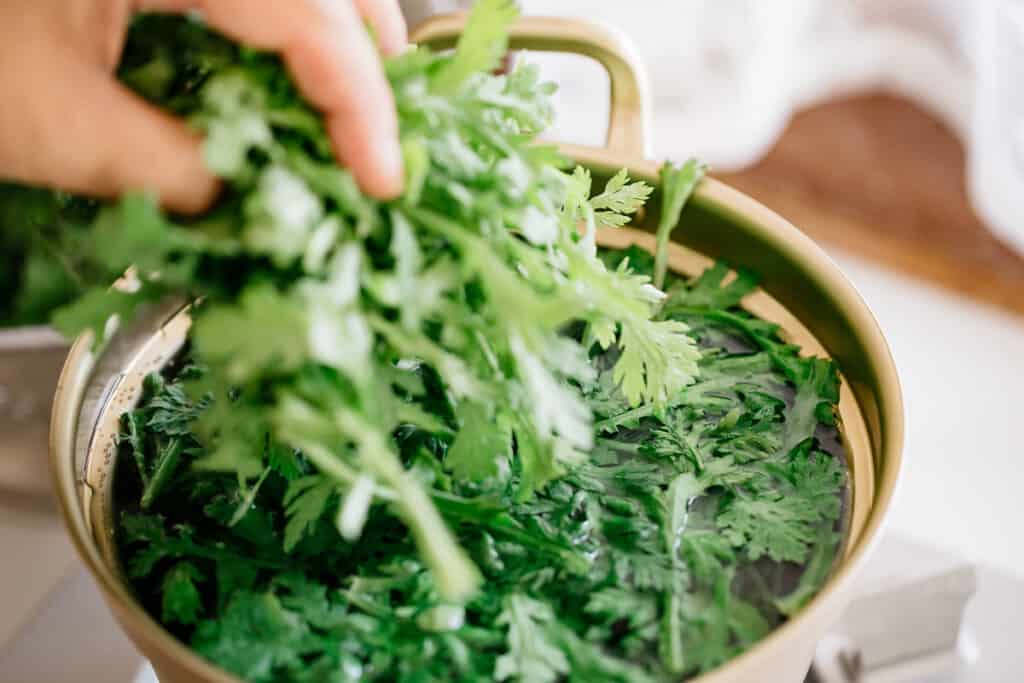
How to Store Shungiku
Refrigerator: Shungiku is susceptible to dryness and loses its freshness in a few days. If you don’t use it straight away, wash it well, wrap it with a damp kitchen paper and then with cling wrap or plastic bag. Then store it in the refrigerator in an upright position as much as possible. But try to use it up as soon as possible while it is fresh.
Freezer: First, you need to blanch it quickly and put it in cold water to avoid further cooking. Squeeze out excess water as much as possible, cut it into about 5cm pieces. Wrap one portion size in cling wrap and ziplock bag. It will keep about a month in the freezer.
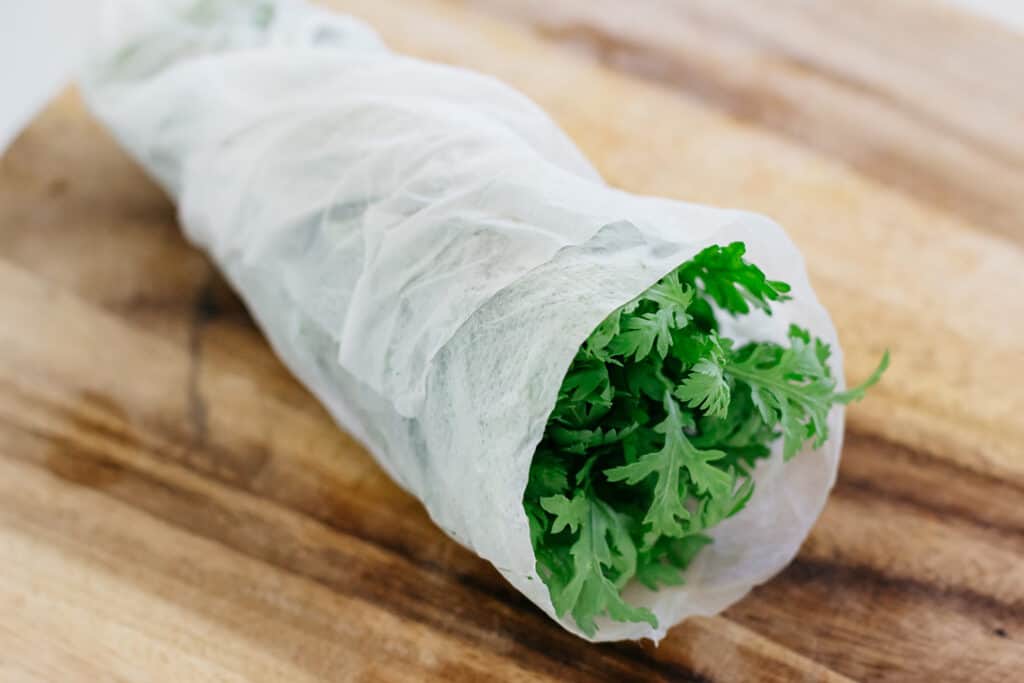
FAQ
A: Yes, you need to wash Shungiku before you start to cook.
A: Even though garland chrysanthemum has a strong flavour, garland chrysanthemum is a vegetable with a less astringent taste. So, it is not necessary to remove this astringent taste.
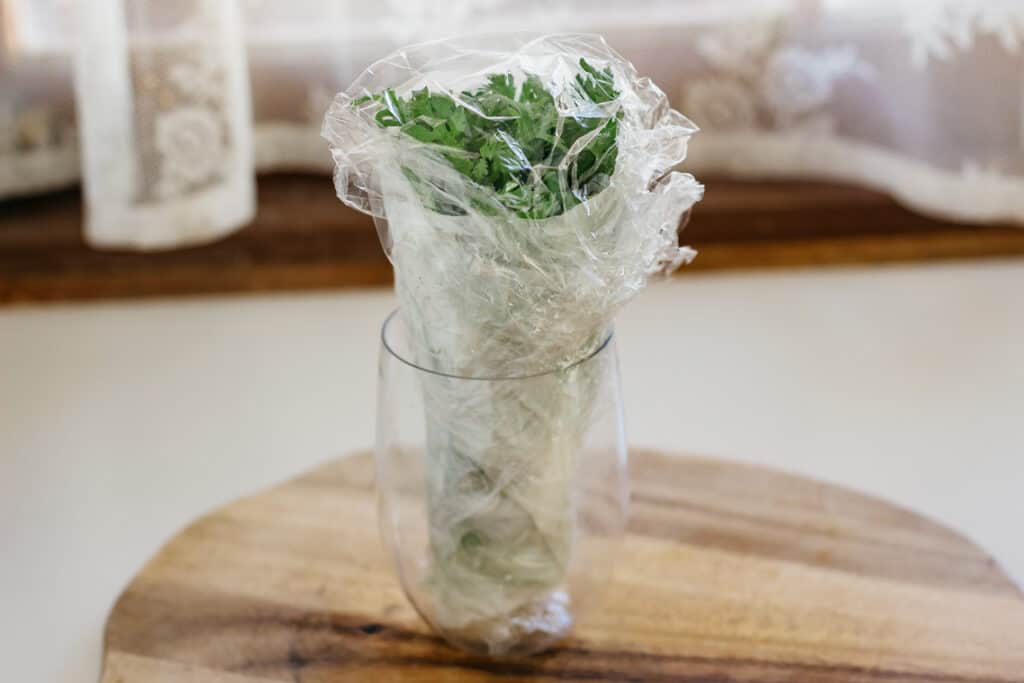
Related Recipes
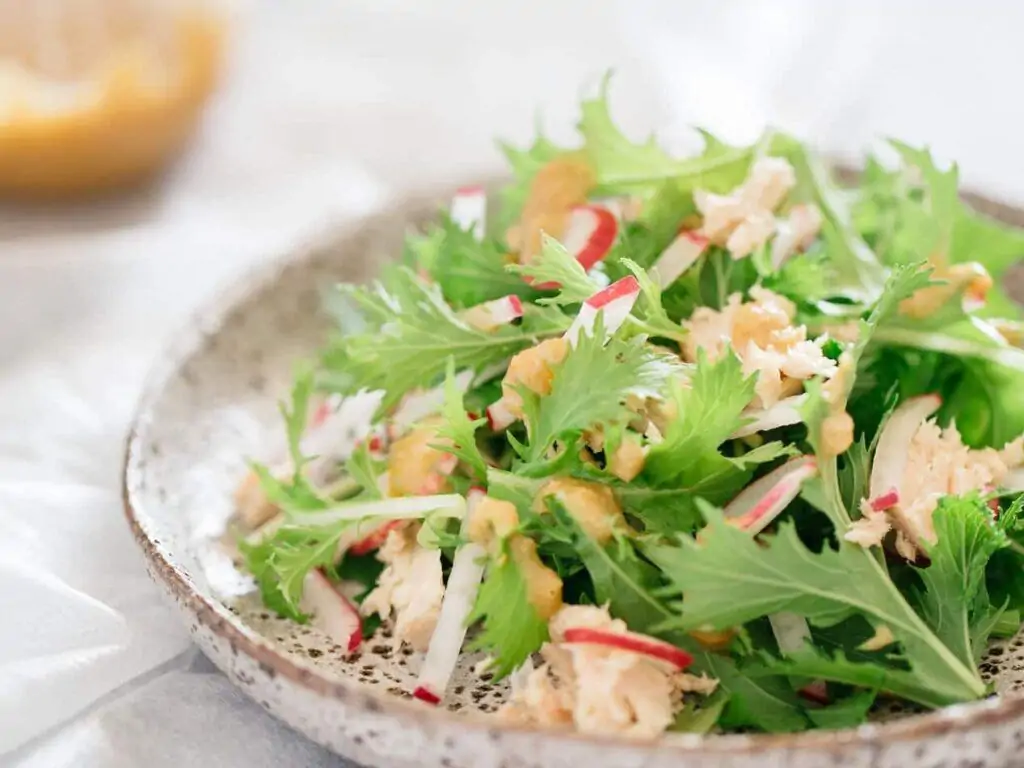
Stay Connected
If you like the recipe please rate the recipe and leave comments below. Also don’t forget to follow me on Youtube, Pinterest, Facebook, Twitter and Instagram. This way you keep up to date with all the latest happenings on Chopstick Chronicles. Don’t forget to Sign up for a weekly newsletter so you never miss out on new authentic delicious Japanese recipes! Sign up form is on the right-hand sidebar.
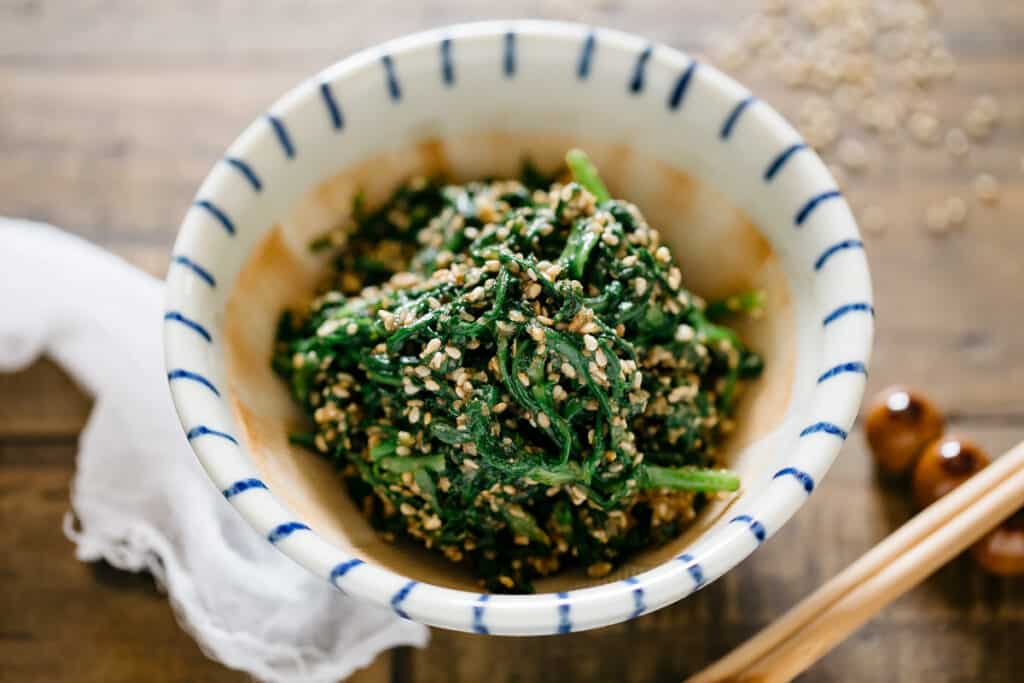
Recipe Measurement
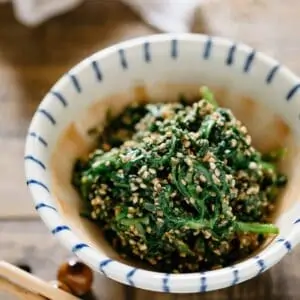
Shungiku Goma-ae
Ingredients
- 3 tbsp toasted sesame seeds *1
- 1/2 tbsp sugar
- 1/2 tbsp soy sauce *2
- 1/2 tbsp sesame seed oil
- 200 g Shungiku
Instructions
- Place the sesame seed in a Japanese mortar and grind them.
- Add the sugar, soy sauce and sesame seed oil.
- Combine them well together and set aside.
- Wash the Shungiku. If the stem is too thick and dry, trim off the leaves and cut the stem into 2 inch pieces (5 cm).
- Blanch the Shungiku in boiling water in a pot for 30 seconds for leaves and 1 min for stem.
- Take Shungiku out and add to an icy cold water bowl to avoid further cooking.
- Squeeze out the excess water and cut the Shungiku leaves in half if they are long.
- Add the Shungiku to the goma-ae dressing in the mortar and toss together with the sesame sauce.
- Serve immediately.
Notes
Nutrition
Chopstick Chronicles is a participant in the Amazon Services LLC Associates Program, an affiliate advertising program designed to provide a means for sites to earn advertising fees by advertising and linking to Amazon.com. As an amazon associate I earn from qualifying purchases.
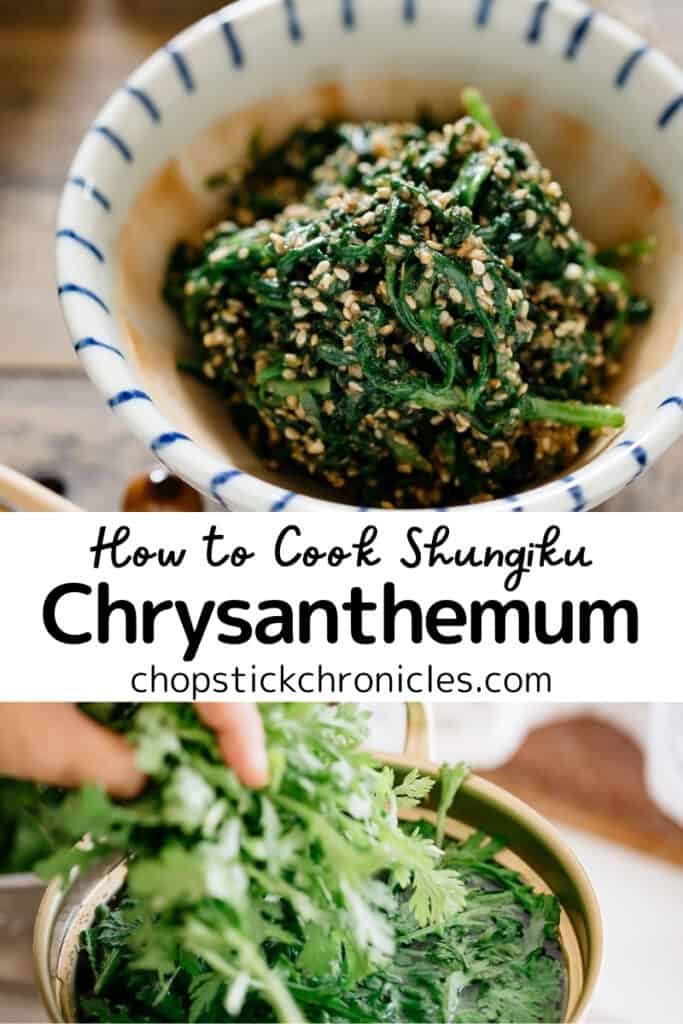
we love this using fresh spinach leaves.
will definitely try your recipe!
thanks for sharing…
deb
((:
You are welcome Sassygirl 😀
Finally a comprehensive guide to Shungiku. Everything i need to know and now i will attempt to grow my own at home.
Thank you Frank 😀 I am glad that you found something interesting for you.